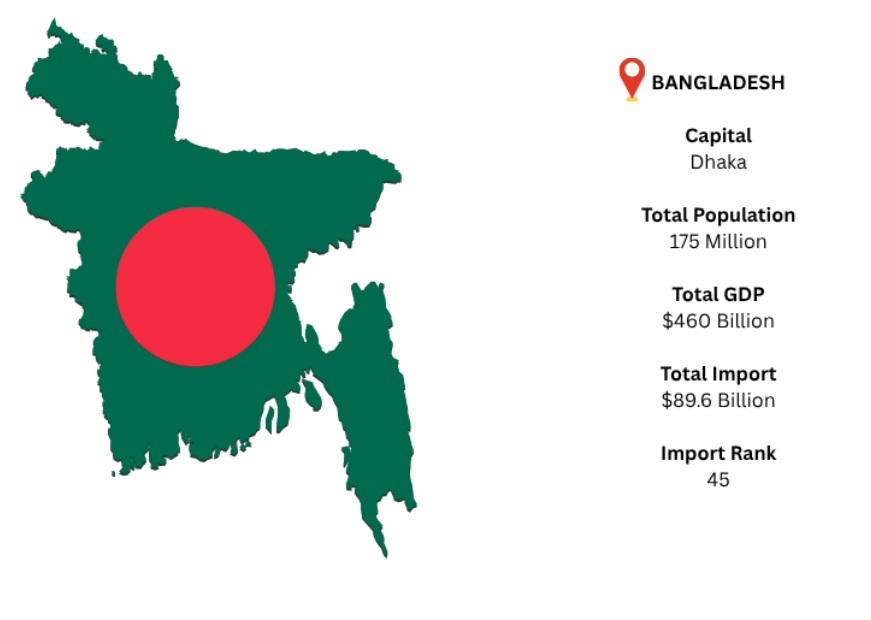Bangladesh is a South Asian nation east of India that has borders with the Bay of Bengal on the south and India on the west, north, and east. The nation's capital and main hub for politics, culture, and the economy is Dhaka. Bangladesh's GDP is projected to reach USD 460 billion by 2024. Bangladesh is the 45th-largest importer in the world, based on recent global trade data. The biggest exporter to Bangladesh is still China. In 2024, as per Bangladesh Import Data, it is anticipated that Bangladesh's overall import value will be close to USD 89.6 billion. The product that is imported the most out of all of them is refined petroleum.
Bangladesh's reliance on international commerce for agricultural commodities, energy resources, and industrial inputs fuels its expanding economy. In order to sustain its manufacturing and infrastructural expansion, the world's second-largest exporter of clothing imports enormous quantities of raw materials, including cotton, machinery, fuel, and chemicals. According to Bangladesh Customs Data, Bangladesh's place in the global import ecosystem is being quickly improved by trade agreements, port improvements, and industrial expansion.



